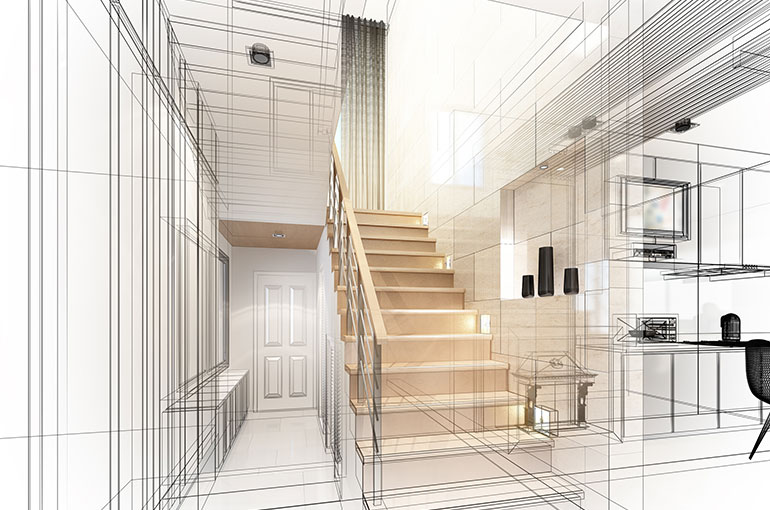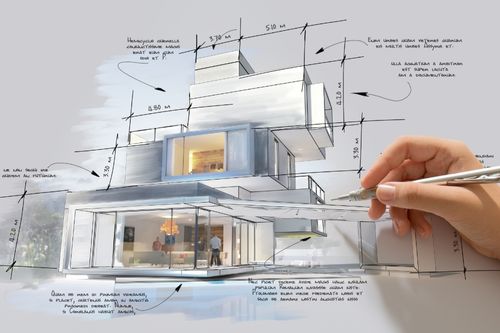A Comprehensive Overview of Architectural Styles and Their Influence on Modern City Preparation and Advancement
Architectural styles have actually long offered as a mirror to the societal values and technical improvements of their time, playing an important role in forming contemporary city planning and growth. From the magnificence of Neoclassicism to the utilitarian strategy of Brutalism, each design has presented unique ideas that affect metropolitan aesthetic appeals and performance.
Historical Summary of Building Designs

As societies transitioned through the Center Ages, Gothic design emerged, defined by its verticality and intricate describing, matching the spiritual goals of the era. The Renaissance noted a revival of classical perfects, combining art and architecture in innovative means that affected subsequent designs throughout Europe.

Today, building styles proceed to develop, driven by globalization and sustainability problems, reflecting a vibrant interplay between heritage and innovation. This historical introduction underscores the relevance of architecture as a mirror of social advancement and as a catalyst for metropolitan growth.
Trick Architectural Styles Explained
The diversity of architectural styles shows the myriad influences that shape our developed setting, each personifying distinct attributes and social significances. Key building styles include Timeless, Gothic, Baroque, Modernism, and Postmodernism, each representing one-of-a-kind historical contexts and aesthetic ideologies.
Classical design, rooted in old Greece and Rome, emphasizes symmetry, percentage, and making use of columns (cda architects). On the other hand, Gothic style, flourishing in the Middle Ages, is characterized by pointed arches, ribbed vaults, and flying buttresses, producing an ethereal quality in cathedrals. Baroque architecture, emerging in the 17th century, is marked by magnificence, intricate embellishment, and a dynamic interplay of light and darkness
Modernism, which got energy in the early 20th century, prioritizes function over form, making use of brand-new materials like steel and glass to create minimal frameworks. Postmodernism, responding against the austerity of Modernism, embraces eclecticism and historic reference, often incorporating lively elements and paradox.

Effect On Urban Planning
In shaping the growth of cities, architectural styles considerably affect metropolitan preparation decisions. The option of building design often dictates the aesthetic appeals, capability, and total personality of metropolitan atmospheres.
In addition, building designs can influence zoning guidelines and land make use of plans. Urban planners have to think about the prevailing architectural trends when developing districts, guaranteeing that brand-new growths harmonize with existing structures. This factor to consider cultivates natural metropolitan landscapes and improves neighborhood identity.
The implementation of specific architectural designs can additionally influence socioeconomic aspects within a city. High-end contemporary layouts may bring in upscale homeowners and services, leading to gentrification, while much more economical real estate options might focus on useful and sustainable styles to suit diverse populaces. cda architects. Eventually, the interplay in between architectural styles and metropolitan planning develops dynamic cities that mirror both historical context and modern needs, forming the lived experiences of their occupants
Sustainability and Modern Architecture
Building styles play an essential role in resolving contemporary obstacles, particularly in the world of sustainability. As metropolitan locations expand and environmental concerns escalate, modern design progressively accepts lasting design principles that focus on energy effectiveness, resource preservation, and minimal environmental influence.
Contemporary building movements, such as biophilic style and environment-friendly architecture, advocate for More Bonuses frameworks that integrate with their surroundings, using all-natural products and promoting biodiversity. These styles frequently incorporate sustainable power resources, such as solar panels and wind turbines, to decrease dependence on nonrenewable fuel sources and reduced carbon footprints.
Furthermore, the combination of my blog advanced modern technologies, such as clever building systems, boosts power management, enhancing resource use while making sure owner convenience. Innovative water administration approaches, consisting of rain harvesting and greywater recycling, more add to lasting city settings.
Significantly, sustainability expands past environmental issues; it includes social and financial measurements. By promoting neighborhood wellness and promoting inclusivity, modern architectural designs straighten with lasting growth goals. The development of architectural techniques proceeds to shape resilient cities that not just satisfy the demands of the existing however also guard the future for generations to come.
Area Interaction in Design
Area interaction in design acts as an important bridge between engineers and the populations they offer, making certain that the developed environment mirrors the requirements and aspirations of its customers. This collective procedure invites community participants to contribute their understandings and preferences, cultivating a sense of possession and obligation towards the areas they live in.
Efficient neighborhood engagement uses various techniques, such as workshops, surveys, and public discussion forums, to gather varied perspectives. These strategies help with a two-way discussion, allowing designers to recognize regional contexts while encouraging locals to articulate their concerns and wishes. This inclusivity not just enhances Related Site the style top quality but likewise advertises social equity by dealing with the one-of-a-kind challenges dealt with by marginalized teams.
In addition, neighborhood interaction can lead to innovative options that might not emerge in a standard layout process. By integrating regional expertise and social worths, architects can produce areas that reverberate even more deeply with users, enhancing functionality and sustainability. Eventually, focusing on area engagement in style processes leads to atmospheres that support social communications, assistance health, and enhance area ties, consequently playing a crucial duty fit modern-day metropolitan landscapes.
Verdict
Building styles have actually greatly affected contemporary city planning and growth, mirroring progressing cultural and technical contexts. As cities proceed to grow and adjust, the continuous discussion between architectural heritage and modern-day style concepts will certainly remain essential in developing inclusive, dynamic rooms that improve quality of life and advertise social equity.